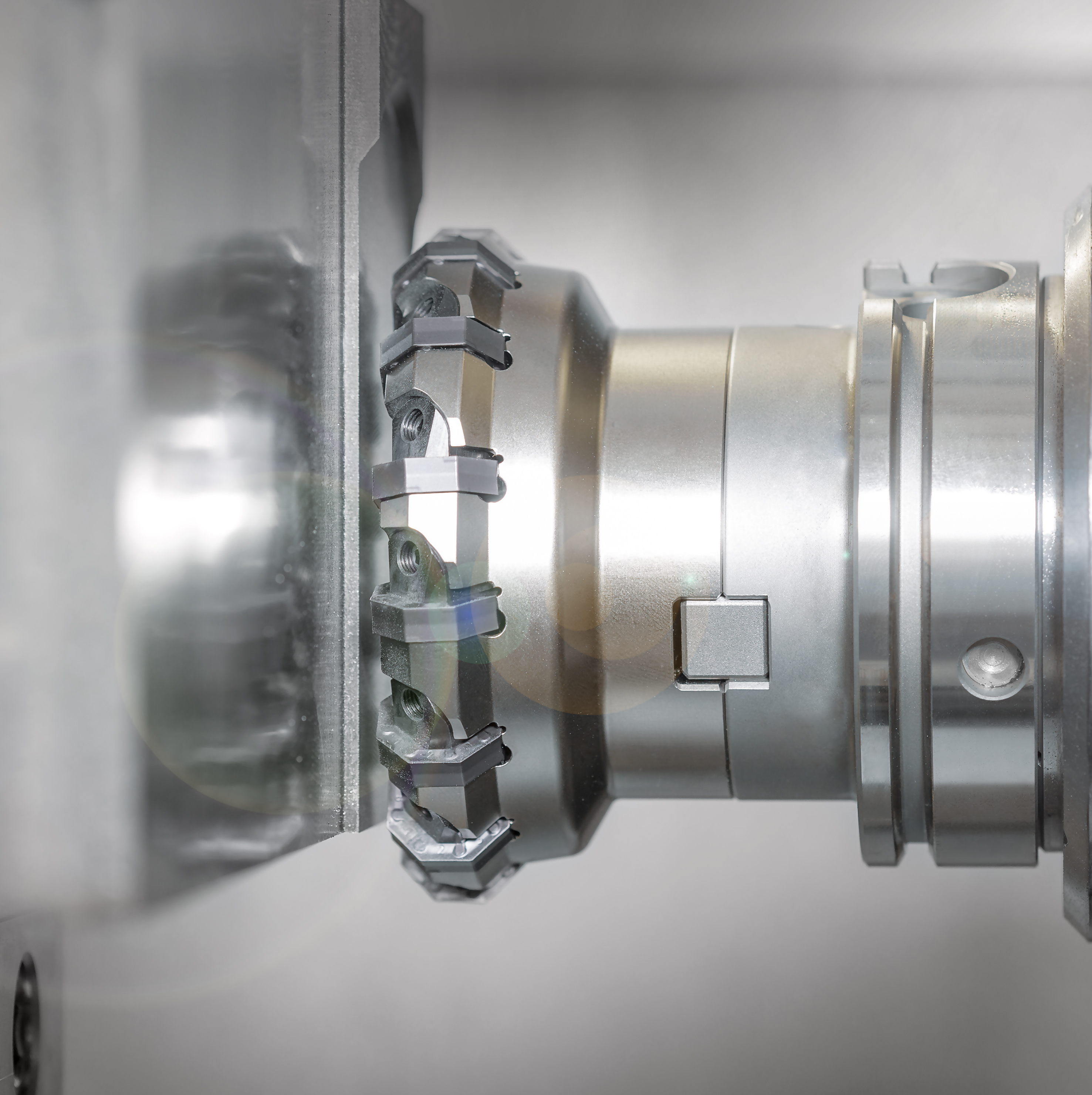
Whether producing turbochargers, steering knuckles or cylinder blocks, customers can mill cast and steel parts considerably more cost-effectively with the radial insert milling program from Mapal Inc. than with previously available solutions. Since the product launch in 2018, there have been a large number of measurable successes resulting from the use of the tools in the series.
Let’s take a quick look back: MAPAL first showcased a product programme for milling with compressed radial indexable inserts at the AMB exhibition in Stuttgart in 2018. “This move was the natural next step towards our aim of being a comprehensive service provider for our customers,” explains Dr Wolfgang Baumann, who is responsible for the product programme of tools with ISO elements at MAPAL. “But our aim isn’t just to provide the customer with all their machining needs in terms of tools and chucks – we also want to offer them added value through our solutions,” adds Baumann. Accordingly, the development process of the new tools was comprehensive and detailed.
“Before this milling programme, our focus was mainly on supporting customers with specific application needs, such as providing support for high levels of stock removal or unstable conditions,” explains Dr Baumann. This machining was mostly carried out using ground tangential indexable inserts. “We’re obviously not the first company to offer a radial milling programme. We’ve simply plugged a gap in our portfolio,” admits Baumann. However, he further adds: “Through our work with special applications, we’ve accumulated extensive in-depth knowledge that has been incorporated into the development of our compressed radial blades. They therefore offer considerable added value and, in particular, economic benefits for users.”
“The success stories that we’ve gathered with our radial insert milling programme prove that our meticulous work is paying off for our customers today,” explains Dr Wolfgang Baumann enthusiastically. In many applications, the cost per part (CPP) was considerably reduced. There are several reasons for this: “In many cases, other tools were superseded once we had analysed the application and selected the optimal tool,” Baumann explains.
“For some applications, our tools now machine significantly more parts until the blades have to be replaced. And in some other machining operations, the same machining times per part can be achieved with fewer blades. However, there are other cases where we can achieve considerably higher cutting data with more blades. We sometimes rely on indexable inserts with more cutting edges, thanks to which each individual indexable insert can be used for considerably longer.”
Contact Details
Related Glossary Terms
- gang cutting ( milling)
gang cutting ( milling)
Machining with several cutters mounted on a single arbor, generally for simultaneous cutting.
- indexable insert
indexable insert
Replaceable tool that clamps into a tool body, drill, mill or other cutter body designed to accommodate inserts. Most inserts are made of cemented carbide. Often they are coated with a hard material. Other insert materials are ceramic, cermet, polycrystalline cubic boron nitride and polycrystalline diamond. The insert is used until dull, then indexed, or turned, to expose a fresh cutting edge. When the entire insert is dull, it is usually discarded. Some inserts can be resharpened.
- milling
milling
Machining operation in which metal or other material is removed by applying power to a rotating cutter. In vertical milling, the cutting tool is mounted vertically on the spindle. In horizontal milling, the cutting tool is mounted horizontally, either directly on the spindle or on an arbor. Horizontal milling is further broken down into conventional milling, where the cutter rotates opposite the direction of feed, or “up” into the workpiece; and climb milling, where the cutter rotates in the direction of feed, or “down” into the workpiece. Milling operations include plane or surface milling, endmilling, facemilling, angle milling, form milling and profiling.
- milling machine ( mill)
milling machine ( mill)
Runs endmills and arbor-mounted milling cutters. Features include a head with a spindle that drives the cutters; a column, knee and table that provide motion in the three Cartesian axes; and a base that supports the components and houses the cutting-fluid pump and reservoir. The work is mounted on the table and fed into the rotating cutter or endmill to accomplish the milling steps; vertical milling machines also feed endmills into the work by means of a spindle-mounted quill. Models range from small manual machines to big bed-type and duplex mills. All take one of three basic forms: vertical, horizontal or convertible horizontal/vertical. Vertical machines may be knee-type (the table is mounted on a knee that can be elevated) or bed-type (the table is securely supported and only moves horizontally). In general, horizontal machines are bigger and more powerful, while vertical machines are lighter but more versatile and easier to set up and operate.






